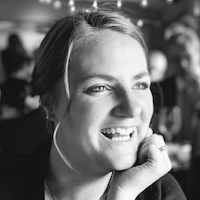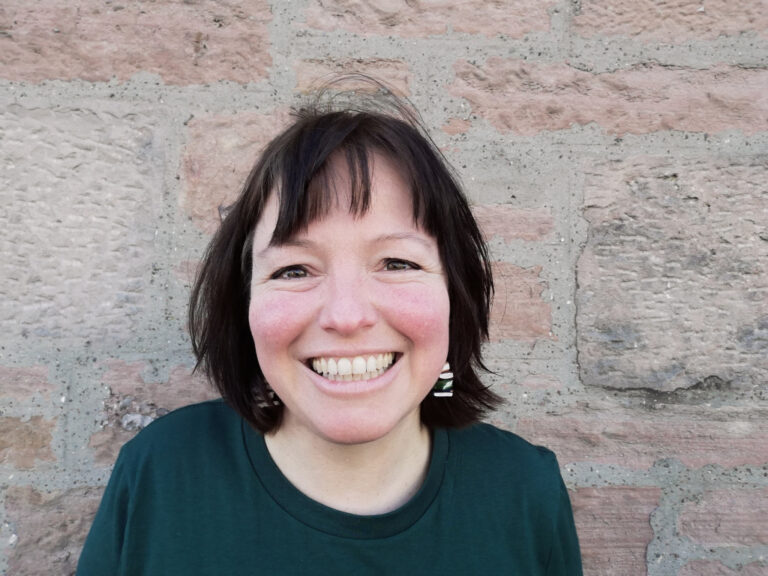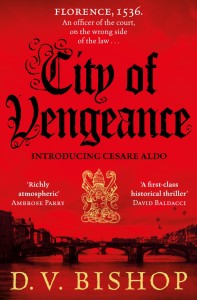
Today’s post is by romance author and book coach Trisha Jenn Loehr (@trishajennreads).
Tropes are a staple of genre fiction. Some folks love to hate them; they even use “tropey” as a derogatory term.
And yet, writers still use them.
And many readers still celebrate them.
Why?
Because tropes, simply put, are things like themes, plot devices, archetypes, and structures that pop up regularly in stories, especially stories within distinct genre categories. Tropes have developed from storytelling patterns appreciated by readers and writers alike.
If you think about it, you likely have favorite tropes that draw you in, whether consciously (e.g., I’m looking for a fabulous enemies-to-lovers romance with an only-one-bed scene) or subconsciously (e.g., realizing that half the books on your shelf feature a protagonist battling against—and ultimately overcoming—an evil empire of some kind).
The Good: Tropes are tools for readers and for writers.
Tropes help readers find stories with elements they already know they like.
Readers, especially those who read genre fiction like romance, mystery, thriller, science fiction and fantasy, have specific tastes around the types of stories they enjoy. When they read back cover copy that indicates “this book has your favorite elements,” they’re more likely to take that book home and read it.
Just as we gravitate toward friend groups with similar interests or favorite foods for meals and snacks, readers gravitate toward stories they already know they will likely enjoy. If I’m trying out a new restaurant, I’ll often scan the menu for a variation on staples like the club sandwich or fish and chips because I know I usually like those dishes and it’s fun to see how different chefs make their version of a common dish. The same goes for stories. Tropes allow readers to experiment with new authors and new books in a safe way because they are already familiar with some elements of the story.
Tropes are a grab bag of elements for writers to play with. Whether we’re looking at overarching structural tropes in fantasy and sci-fi novels or relationship elements in romance novels, tropes give us a wide array of components to experiment with as we write.
Think about it, how many books or movies can you name that feature one (or more) of the following common tropes?
- A grumpy or quirky detective
- A “chosen one” who must save the world
- A love triangle
- An evil leader who wants all power for themselves
- A damsel in distress
- A fake relationship
- A reluctant hero
- An ensemble of unlikely companions
You can probably come up with a long list, right?
After all, as Mark Twain wrote in The Autobiography of Mark Twain, “There is no such thing as a new idea. It is impossible. We simply take a lot of old ideas and put them into a sort of mental kaleidoscope. We give them a turn and they make new and curious combinations. We keep on turning and making new combinations indefinitely; but they are the same old pieces of colored glass that have been in use through all the ages.”
And that my friends, is the goal—to take ideas and story components and put them together in new and interesting ways. The key to using tropes well is to tweak them so that, while still familiar enough to be recognizable and draw a reader in, you’ve used the tropes in unique, memorable ways rather than simply repeating the same thing over and over.
The Bad: Tropes used poorly or in boring, predictable ways annoy readers.
When writers don’t do the work to use tropes in surprising ways, readers get bored. Overused tropes plopped into a story without something transforming or fresh leads to predictable stories. That’s when readers toss out the insult of “lazy writing.”
An enemies-to-lovers romance (forgive me for using this example again, but it’s one of my absolute favorites) without a compelling, layered reason for being enemies feels forced. The surface reason for being enemies is usually not the real reason why the two characters dislike one another (even if they think it is). The layers of emotional depth a writer can build using backstory and story-present, bit by bit, to make an enemies-to-lovers trope feel fresh, is what makes it an intriguing take on the trope rather than unnecessary conflict for the sake of keywords.
When a trope gets used in a way that’s too similar to another work, it feels to many readers like the same story with new character names. This is often how people describe Hallmark movies or Nicholas Sparks novels. But many, many, movie-goers and readers love them. Why? Because they recognize the storytelling patterns and elements that they like and are comforted by knowing how the story will progress.
Readers don’t want to read the exact same story over and over again. But they do want to read similar stories that use loved elements in new ways. Tropes used poorly run the risk of becoming clichés.
The Ugly: Writers can stuff too many tropes into their story.
Tropes are often confused with clichés. Tropes, in and of themselves, are not so bad, as we’ve already discussed. Clichés and stereotypes, however, are ideas or patterns that are no longer effective storytelling or enjoyable for readers because they are so overused in the same boring way or are no longer acceptable to readers that they become a turn-off rather than a turn-on.
Trope stuffing happens when a writer throws every trope they can think of into a novel in an effort to try to appeal to all readers or all keyword searches at a retailer like Amazon. You’d never toss random spices from your spice rack onto your food with no intentionality for what flavors go together and what quantity works. A few tropes used thoughtfully and intentionally will create a much more interesting and cohesive story than one in which every possible trope is used.
Clichés and stereotypes can be boring and, almost as often, offensive to readers. We are realizing that a lot of stories we’ve loved are problematic and some tropes that used to be common have become unacceptable: The damsel in distress who needs the big suave man to come and save her because she’s incapable of helping herself. The evil villain with no backstory and no depth. That token diverse side character who is immediately killed off or sent on a pointless side quest. The all-white, all-male, all-straight ensemble cast of heroes or anti-heroes.
Being intentional about writing the world we live in—and the world we want to live in—is an important consideration when choosing tropes.
The challenge
Take a look at your current work-in-progress. See if you can identify the tropes you’re using. Make a list in one column and then, in the next column, brainstorm ideas for how you can play with those tropes in new, interesting, distinct ways.
If you’re stuck, grab a few of your favorite books from your shelf and think about the tropes they use. What do you enjoy about those tropes? And in what ways did those authors that you enjoyed reading, rework those tropes into something fresh?
Tropes are tools for our art. Just as a painter uses brushes and watercolors to blend and create, we as writers can experiment with, blend and bend, and upend tropes to make our stories both familiar and refreshing for our readers.

Trisha Jenn Loehr is a romance writer and Author Accelerator certified book coach who helps busy women who want to write romance novels without guilt or shame prioritize their writing, develop their craft, and find joy in the journey toward their publishing dreams. Connect with her on Instagram @trishajennreads and at trishajennreads.com.






